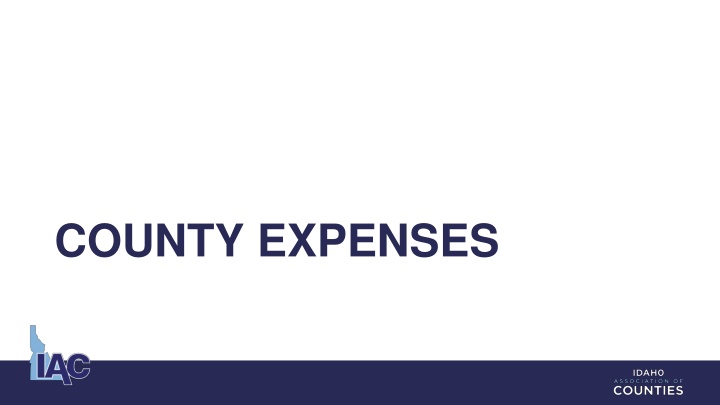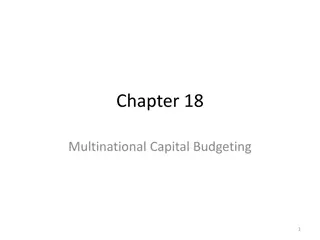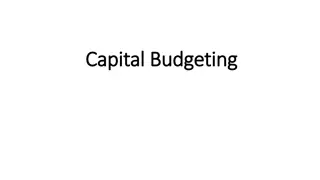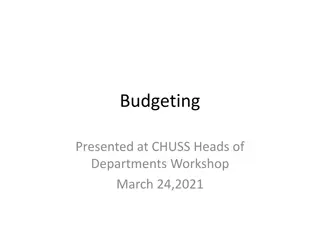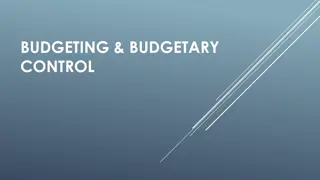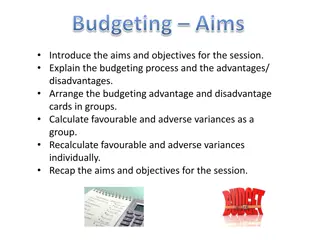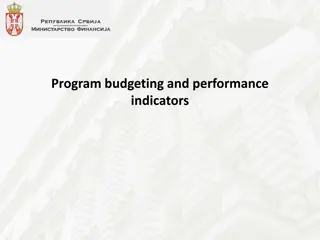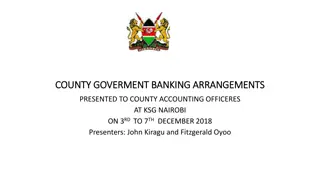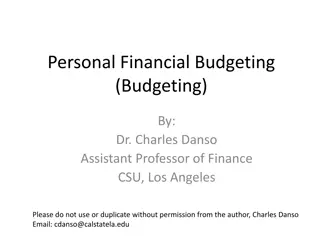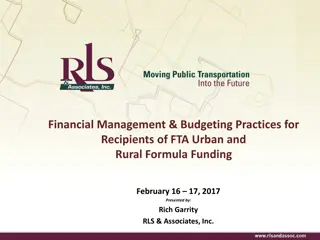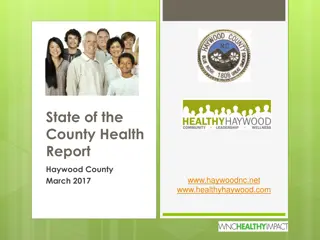County Budgeting and Financial Health Overview
Evaluating the financial health of a county involves assessing budget priorities, considering special factors for 2022 like ARPA funding and legislative impacts, understanding A, B, C, and D budget classifications, managing employee compensation, and handling elected official salaries and employee benefits effectively.
Download Presentation

Please find below an Image/Link to download the presentation.
The content on the website is provided AS IS for your information and personal use only. It may not be sold, licensed, or shared on other websites without obtaining consent from the author.If you encounter any issues during the download, it is possible that the publisher has removed the file from their server.
You are allowed to download the files provided on this website for personal or commercial use, subject to the condition that they are used lawfully. All files are the property of their respective owners.
The content on the website is provided AS IS for your information and personal use only. It may not be sold, licensed, or shared on other websites without obtaining consent from the author.
E N D
Presentation Transcript
EVALUATING COMPETING BUDGET PRIORITIES What is the overall financial health of the county? Is it mandated? Will it create efficiencies? Will it require more staffing? Does it have a dedicated revenue source? Will one-time money be used for a potentially ongoing expense? Does it meet current and future growth projections?
SPECIAL CONSIDERATION IN 2022 Expenses funded by ARPA Impact of House Bill 316 Reduced expenses for medically indigent and involuntary commitment proceedings Increased assessments from public health districts Transportation funding Budgeting of one time surplus distribution Open budget this year vs projects in 2022 Estimating ongoing enhancements House Bill 362
THE ABCS OF COUNTY BUDGETS What are A, B, C, and D budgets? A budgets are for salaries and wages only. B budgets are for everything else (unless your county has a C budget). C budgets are for capital expenses (not always used). D Budget are for employee benefits (retirement, FICA, insurance, etc).
THE A BUDGET: EMPLOYEE COMPENSATION How to compute employee wage/salary increases? Straight percentage across the board. Set dollar amount across the board. Step & Grade system or market longevity system. Distribute a set dollar amount for elected officials and department heads to handout as merit. IMPORTANT: Make it equitable and don t get sued! NOTE: Salaries are set by BOCC (Section 31-3106, Idaho Code).
ELECTED OFFICIAL SALARIES What is in the budget is full compensation for their service. Not to be raised or lowered during the fiscal year. No bonuses and no reductions other than as required by law. Idaho Code sections: 32-3101, 31-3106, and 31-816.
EMPLOYEE BENEFITS Health, accident, and life insurance Vacation, sick leave, and personal holiday PERSI Social Security Worker s Compensation Unemployment
B BUDGET EXPENSES Annual equipment and supplies. county operating expenses including office Be sure to review the previous years expenditures. Take projects/costs. into consideration any upcoming onetime Equipment identifying when items should be budgeted for replacement. replacement schedules can be helpful for Remember to plan for the unexpected (within reason). Know what you can and can t afford.
C BUDGET EXPENSES Funding for buildings, special capital equipment/machinery, vehicles, etc. Generally requires long-term planning. Funding options: Annual appropriation lease, Save up and pay-as-you go, General obligation bonding (66 2/3 voter approval), Revenue bonding (50% + 1 voter approval), or Judicial confirmation (ordinary and necessary).
D BUDGET EXPENSES Used only if benefits are not included in a county s B budget. Funding for employee benefits, including: Payroll Taxes (Social Security, Medicare) Health Insurance (dental, medical, vision, etc.) Employee Retirement (PERSI, 401(k), 457(b), etc.) Unemployment Insurance Workers Compensation Not all counties have a D budget.
BUDGET AMENDMENTS What if the budget looks like it will be overdrawn? Open budget and make hearing with proper notice (Section 31-1605, Idaho Code). Expenditures made in excess of any of the budget appropriations could result (Section 31-1607, Idaho Code). adjustment in public in a misdemeanor
GENERAL BUDGET RESERVES BOCC appropriations, not to exceed 5% of the Current Expense and Justice Fund Budget (Section 31-1605, Idaho Code). This may be used in the event of unforeseen contingencies requiring money not placed in the budget to be expended. Requires a unanimous vote of the BOCC. has the right to make general reserve
